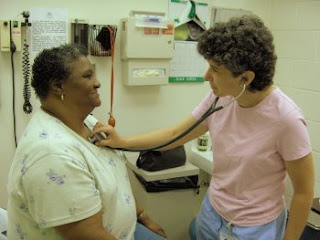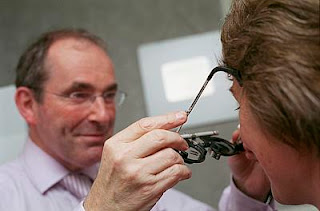Imagine if it were possible to prevent vast amounts of human suffering in B.C. while saving the provincial treasury hundreds of millions of dollars each year.
The possibility exists, but it requires rethinking what we mean by "health care". It means shifting our efforts toward disease prevention rather than focusing on crisis management. On that front, we have a long way to go.
Consider this: in spite of a mountain of evidence for the personal dangers and public costs of smoking, doctors in British Columbia are not allowed to bill the provincial health-care system for helping patients kick their addiction to tobacco. That remarkable policy illustrates just how little emphasis we have put on preventing, rather than curing, disease in B.C.

In fact, doctors are not typically allowed to bill the Medical Services Plan for helping their patients deal with poor diet, lack of exercise, or excessive drinking—all of which result in very expensive burdens on the health-care system. Fully 25 percent of all direct medical costs in Canada—$9.7 billion—results from a very short list of risk factors such as smoking, obesity, poor nutrition, and lack of exercise.
A major part of good health care should be offering proven, cost-effective means of reducing these risks to people who come to see health professionals.
Yet according to a 2005 B.C. Health Ministry report, preventable conditions such as hypertension, diabetes, and lung cancer cost the province a whopping $1.28 billion annually, clogging our hospitals and emergency rooms with droves of people who need not be there. The World Health Organization estimates that 90 percent of Type 2 diabetes and 80 percent of coronary heart disease could be avoided or delayed with regular physical activity, quitting smoking, and reducing stress.
All of this drives Vancouver doctor and former city councillor Fred Bass crazy. He cofounded the nonprofit Society for Clinical Preventive Health Care (SCPHC) 10 years ago to try to move standard medical practices in B.C. toward what science tells us is actually effective clinical prevention.
"We got started way back in 1990 in the B.C. Stop Smoking program," Bass says. "We had very good evidence even then that…we could double or triple the rate at which people stop smoking."
He believes this is a good example of how a small investment in prevention can reap big rewards for the health-care system. "If patients going for elective surgery have stopped smoking, they cut down their use of intensive care…their length of stay…their likelihood of complications of surgical wounds, and their cardiovascular complications."
Although many British Columbians have kicked the habit, smoking still costs the province $525 million in direct medical costs and another $904 million in lost productivity, a 2004 Health Canada report noted. If only 10 percent of smokers quit, it would save the province more than $2.9 billion over their lifetimes.
Yet unlike other provinces, such as Quebec and Ontario, B.C. does not cover the costs of stop-smoking medications for people who want to quit—one of the most cost-effective interventions in all of medicine.
According to Bass, tobacco use is an example of people being stigmatized rather than helped. "There is a lot of prejudice and a lot of lack of understanding around smoking: ‘It’s a dumb choice; people deserve what they get.’ They don’t understand, in fact, that a lot of smoking is explained by the genetics of smokers. The two major predictors of smoking are years of education and smoking behaviour of the biological parents."
Many doctors now feel that tobacco is so addictive that smoking should be considered a disease rather than merely a bad lifestyle choice.
You don’t have to tell Roger Perron that. The antismoking activist lost both his legs to tobacco. He was so addicted to smoking that he would rather smoke than eat. "When I was hitchhiking, I could go three days without food as long as I had cigarettes."

Perron believes he is living proof that growing up in a smoking household is a major risk factor. His entire family smoked. "Very few people come from a smoking family and can walk away from it.…I was born addicted. No doubt in my mind. I had my first smoke when I was 11 and never stopped."
He only gave up cigarettes after he had lost both his legs to Buerger’s disease—a gruesome inflammation and clotting of the circulatory system in hands and feet caused by tobacco; the condition can lead to ulcerations and gangrene.
"I took my work boot off one day and two of my toes just split open. You could see the bone. You could see the meat.…I went to the doctors and they zipped them off. The second foot was the same thing—just like a sausage, it was so full of gangrene." He was only able to quit cigarettes when the condition was threatening to take his arms as well.
Incredibly, his tobacco-related tragedies were far from over. His 17-year-old son died when the cigarette he was smoking caused an epileptic seizure and he fell into a lake and drowned. "He quit for about six months. That morning, for whatever reason, he went over the lake, decided to light up, had a seizure, fell in the lake, and drowned.
"It’s the worst nightmare in your life. I knew a couple of people that had lost their child, and I would say, ‘I would kill myself.’ I remember, I used to say that…" Recalling it now, he asks, "Why am I still here? Maybe I’ve got something to say, and I’m saying it now."
In spite of his tragedies, Perron is far from a bitter man. He volunteers in his community and at sporting events. He did all the renos in his well-kept condo. But his primary mission in life now is to tell his story and warn others—especially children—of the dangers of smoking.
His book, My Addiction to Smoking (Trafford Publishing), tells his unvarnished story. "I’ve had people read the book right there in front of me, and they had tears in their eyes, and they ask me, ‘When is the good stuff going to happen?’ and I say, ‘Right now, I’m laughing.’"
Perron stresses that he does not feel sorry for himself or want others to feel that way. "I’m not mad. I’m not angry. What I am is I’m pissed off at those [government and media] who can do something with the smoking issue…and they won’t do anything about it."
Sitting in his wheelchair with no legs, Perron makes a powerful point. Why won’t the B.C government offer more help for doctors to help their patients stay healthy? Bass offers these thoughts: "This province has a long history of not doing preventive measures, of using the health-care system for only diseases and injuries, and this is part of that tradition."
Smoking is just one example of how skewed our health-care system is toward "acute care": namely, dealing with health problems after they develop into a serious medical issue rather than supplying the more preventive "primary care" that could be provided by many family physicians.
Look no further than the health-care budget to see where our priorities lie. Health care is the biggest thing that government does. It consumes almost 40 percent of the provincial budget—more than $13 billion for the current fiscal year. Given that kind of money, one would hope that we are not making major mistakes in how it is spent.
Yet primary care garners a mere seven percent of provincial health-care resources. Proven clinical prevention, of the type that Bass and the SCPHC have been trying to promote, has even less support: less than 0.5 percent of the health-care budget.
Theresa Negreiff, executive director of the SCPHC, is particularly frustrated by how effective delivery of preventive heath care appears to have been hijacked by the government’s need to blow its own horn. "I think that part of the resistance from government is the fact that they need to be very public in what they are delivering. It [doctor-delivered prevention] is very effective but it is very low-key…there’s not going to be billboards about it; there’s not going to be television advertising about it."
Numerous studies have shown that the best place to reach people to help them adopt healthy behaviours is in their doctors’ offices. However, Victoria has chosen to cut funding for groups like the SCPHC, despite the B.C. Liberals’ recent announcement of a $4.1 billion surplus for the 2006 fiscal year.
Now the B.C. government’s main response to promoting health is the advertising-based Act Now campaign—something that does not impress those on the frontlines of health promotion.
"The irony is that the premier’s office came out with the Act Now program, citing these lofty goals of reducing tobacco usage and increasing physical activity and eating fruits and vegetables, but how is this going to happen?" Negreiff asks. "I don’t see a lot about how this is going to happen besides sending out nice advertising and telling people to do it. Eighty percent of the population goes to see their doctors every year.…It is one of the best places to do it [prevention]."
Besides politics, another obstacle to improving preventive health care in B.C. appears to be the payment scheme for doctors. British Columbia uses a "fee for service" funding model for about 80 percent of the province’s physicians. Simply put, this means that most doctors are paid for units of health care provided: the number of patient visits, prescriptions written, referrals made, et cetera. Ever wonder why when you go into a walk-in clinic your actual time with the doctor is about five minutes or less? Our fee-for-service model is largely to blame.
According to Dr. Jim Thorsteinson, executive director of the BC College of Family Physicians, this pay structure can be equally frustrating for doctors. "It’s not uncommon for a patient to come in with six health problems, but we’ve got one fee, whether it’s one minor problem or six major problems, so the fee structure is not well set up to help physicians spend the time they need to focus on their patients."
Basically, if a doctor does want to do more preventive health care, she is likely forced by our billing system to do so out of the goodness of her heart—and pocketbook.
"I’ve often said that to take time out of your practice to plan proactively for care was simply a donation," Thorsteinson says. "You weren’t seeing patients, then you weren’t being reimbursed. Frankly, nobody valued that time. Your patients might appreciate it, but it was not going to pay the bills.…It truly has not been valued by our health-care system."
Other jurisdictions have invested in a more population-based billing model that pays doctors per patient, not ailment, and with impressive results.
When English doctors got paid to prevent disease rather than just treat it, practices changed fast. According to Thorsteinson, "the result was that very, very quickly, practices reorganized, they hired additional staff, identified the subpopulations within the practices and called them in for appropriate follow-ups, both for various disease conditions and risk conditions.

"Practices that are allowed to operate on a population-based funding model can do a lot more care over the phone. They can delegate more care to nursing staff and others and focus more on managing their overall population, and identify people that have fallen off and focus on getting them back into the practice and getting them assessed. It opens up a range of possibilities which the fee-for-service system doesn’t, where the doctor has to see the patient eyeball to eyeball before they can be paid."
Paying doctors to keep their patients healthy rather than only when they get sick seems like a no-brainer, but we have a long way to go. In a recent international survey, only 13 percent of Canadian doctors reported any financial incentives for enhanced prevention of disease. In the United Kingdom, that figure was 72 percent. Not surprisingly, in the U.K. 97 percent of patients regularly receive reminders of preventive and follow-up care, versus only 28 percent in Canada.
Thorsteinson concedes that some changes are happening in B.C., but he is not yet convinced they will make a major difference. "There is a new and complex fee system that does provide for payment for some planning care that has just come into place in B.C., and we will have to see how that works."
He would prefer to see more fundamental changes in our billing system. "A population-based funding model that still allows for some fee for service…is probably the way to go," Thorsteinson says.
Other issues in our health-care system as basic as record-keeping remain primitive. Incredibly, most medical records in B.C. are not electronic. This means that if you come into a hospital unconscious and have a serious drug allergy, your life could be at risk because doctors have no ready access to your medical history. Only 23 percent of primary-care doctors in Canada are using electronic medical records.
Besides being dangerous, our outdated medical-record system also costs a lot of money. A 2002 report for the Canadian Medical Association showed that electronic medical records in Canada could save more than $1.3 billion annually in duplicate testing, administration costs, and adverse drug reactions.
There is also mounting evidence that a team-based prevention model involving other health-care providers saves money, provides better care, and is far more efficient.
A 2005 report from the BC Medical Association—which negotiates the fee-for-service rates on behalf of the province’s specialists and general practitioners, as well as doctors’ fees in private labs—found that such multidisciplinary care provided better treatment and reduced hospital admissions for a variety of ailments, including asthma, mental disorders, diabetes, and chronic congestive heart failure.
Multidisciplinary teams are becoming more popular in Ontario and Alberta, largely due to differing funding models available to their doctors and dedicated provincial funding. Ontario now has 54 such team-based health centres, with funding to open 22 more by 2008.
In contrast, B.C. has fewer than 10—only two of which are well-established multidisciplinary clinics. One of them is the Mid-Main Community Health Centre, a nonprofit association in Mount Pleasant that has been operating since 1986. Patients there have access to doctors as well as dental services, counselling, a pharmacist, a podiatrist, and chronic-disease management. It also offers group counselling on diabetes, quitting smoking, women’s health, heart disease, and stress management. The idea is to provide as many different kinds of health care under one roof as possible so patients can get the help they need without making multiple appointments in different locations with different doctors.
According to Mid-Main’s executive director, Dr. Irene Clarence, paying doctors to do the right thing is critical. "The fee for service does not work [for complex patients]. Basically, the doctor is rewarded for doing the wrong thing." She puts it more bluntly: "If the doctor does a good job, they go broke." Instead, all Mid-Main’s staff are on salary.
Clarence says that the public is being misled by the mainstream media on health-care issues.
"There has been a real push in the media to say…we can’t afford good health care so we have to settle for bad health care. Somehow that message just keeps being put out there, and people are starting to believe that, but it’s not true. We need to make sure that the public doesn’t buy that. Good health care can be afforded, but there has to be the will to make that happen."
Not only is the multidisciplinary model more efficient, it also makes for happier doctors. A survey in the 2005 BCMA report found that 96 percent of B.C. physicians working in a team said that they planned to stick with multidisciplinary practice for the next five years. This was in spite of the fact that they were likely making less than their fee-for-service colleagues.
So if this is the way to go, why isn’t it happening?
"What’s lacking is structured fund ing and incentives," Thorsteinson says. "There’s interest by family doctors, there’s generations of literature dating back to the ’60s and ’70s, and, most recently, the [2002 Roy] Romanow report [on the future of Canadian health care] stating that this is the way to go. Our governments just haven’t been able to get away from acute care to commit to this area. I guess this is just not as sexy and it just doesn’t get the headlines. Preventing diseases five or 10 years from now just doesn’t have the same impact in the headlines as someone who can’t get in the operating room yesterday."
Contacted by the Straight, B.C. health minister George Abbott voiced his support for preventive health care and multidisciplinary teams but conceded that we have a way to go. "I think we have tended to emphasize the acute-care side of the ledger previously in B.C.…I think we are behind some jurisdictions, particularly Alberta and Ontario, but we are working hard to catch up. I think we need to go there, and we need to go there as quickly and effectively as we can."
Abbott agrees that keeping people out of our hospitals is going to be more important than ever. "I have religion on primary health care and prevention. I think those are the two lights at the ends of the tunnel that are not onrushing freight trains."
Colleen Fuller, a health- and drug-policy research associate with the Canadian Centre for Policy Alternatives, is not convinced. She points out that many preventive services that used to be covered by the public health-care system—such as physiotherapy, podiatry, massage therapy, and annual eye exams—have been delisted by the B.C. Liberals.
"If you have diabetes, one of the best ways to prevent blindness is to have an annual checkup with an ophthalmologist. This is the single most effective intervention that you can offer people with diabetes so they don’t go blind."

Yet according to Fuller, the provincial government is "decreasing access to a lot of services that are properly defined as preventive health care, so it is absolutely impossible to believe George Abbott when he says that this government in Victoria is supporting preventive health care. They’re not."
That stated B.C. Liberal commitment to preventive health care does not seem to be trickling down to innovative models like Mid-Main.
In spite of international recognition for its work, Mid-Main was forced to lay off staff this year due to lack of matching funding from the provincial government. Ottawa infused start-up money between 2003 and 2006 in preventive health care, but there were never any matching or follow-up funds from Victoria.
"It’s so sad. On one hand, we were taking around dignitaries from Sweden and Norway and they were saying ‘Great work,’" Clarence says. "On the other, the money is slowly fading away to do this great work."
The fate of the Society for Clinical Preventive Health Care is even more shocking. In a sad testament to B.C.’s lack of commitment to prevention, it was forced to close its office this month due to lack of provincial funding.
With an annual budget of slightly more than $200,000, the SCPHC developed preventive-health-care programs that could save the provincial treasury tens or hundreds of millions of dollars. After three cuts to its budget in two years, there was no choice but to lay off staff and permanently shut the doors.
"It’s insane-making," Bass says.
The bright side, if there is one, is the enormous potential for improving health care in B.C. However, it will require rethinking what we mean by health care and wellness. From eliminating carcinogens in the environment to reducing homelessness, from improving diet and exercise to reducing well-known risk factors such as smoking, we have a tremendous opportunity to make B.C. a healthier and happier place.
This piece was published in the Georgia Straight on July 19th, 2007


 possibilities it creates.
possibilities it creates.


